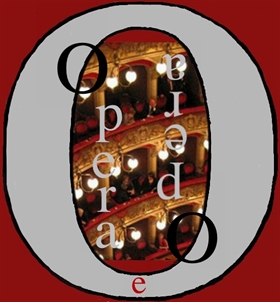Review by Natalia Dantas © dibartolocritic
Palermo, November 29, 2016
Carmen at Bizet is Carmen. Without any other name. But if Carmen is Carmen, far from underestimating her French origin, her thoughts turn to Spain.
The fact that the recorded by Calixto Bieito, illo tempore, did not personally like, for inspiration, the atmosphere of the Spanish South properly and, in a demanding and illuminating journey of interpretative research, ended up, with all his "artistic team", in Morocco among the smugglers in Mercedes, it shouldn't text, normally. Instead he does. And the beauty is that he has been doing it for years, for several years.

See also reproposed at Massimo Theater of Palermo the November 29, 2016 his staging of Bizet's masterpiece which has now almost traveled around the world, sincerely, apart from the car headlights shot into the eyes of the spectators in the stalls, the gratuitous symbolism of certain characters, the integral nude of the bullfighter/dancer who no longer makes an impression on anyone, the squalid telephone booth (“What would a love story be without a telephone?” eloquent words of the director in the umpteenth interview) infuses a great sense of sadness. Therefore, the writer prefers at the moment to gloss over an overly judged, chatted and above all "seen" staging, moving on to the musical side.

The M° Alejo Perez, driving the valid Palermo theater orchestra he probably posed more the problem of the orchestral volume than of the colours, launching himself into peaks of complacency in the parts in which the orchestra alone could not bring "shadow" to the performers. Very routine, however, even called orchestral parts, the dynamics faded, the very rich palette offered by Bizet was not emphasized enough. AND’ a French palette: to make it a kind of conveyor belt underlying the song is definitely to flatten it.
And if the protagonist doesn't shine in sensuality, at least hopefully she shines vocally. But the Carmen by Justina Gringyte she didn't shine, in truth, not even in this fundamental datum, because, despite the beautiful brown color of the voice, the setting left something to be desired, favoring an approximation in the attacks and in the endings which was penalizing for her, also lacking in terms of phrasing and of the diction, almost unintelligible.

The Don Jose by Roberto DeBiasio perhaps he showed himself more committed to maintaining his vocal power to the detriment of interpretation, but nevertheless he proved, vocally, to be a pleasant performer, enjoying a good timbre mixture and a discreet projection, if you forgive him for giving up the breath in the piano, watching the event in falsetto like a completely French habit.

The Micaela by Shelley Jackson it lacked sweetness, despite the technical efforts in the yarns and plans, and was certainly not helped by the direction or the costume. Her duet with don José in the first act, then, of sublime artistic value, was affected by an unpleasant discord between the performers.
The willing Escamillo by Zoltan Nagy he showed a robust baritone voice in evolution, of excellent school, to be listened to even in a promising perspective. Even here, however, the direction has penalized a character who personally needs to have greater prominence on the stage and, all around, choreography.
Secondary characters correct but not brilliant, Chorus directed by Peter Monti rather lacking in colorful and overflowing in the strong, equally that of white voices under the guidance of Salvatore Punturus, in an overall whole that has also been affected by the costumes sloppy of Mercy Paloma and of the lights not particularly incisive of Alberto Rodríguez Vega.
And here it is a must to return to the Director by Benedict , but not to analyze it (it would be the umpteenth time and it would also be time to archive it), but to underline overall how harmful a directorial production that also has the ability to misleadinstead of directing the viewer's attention to the protagonists on stage.
The audience, in fact, expecting scenic splendors or, if nothing else, a little’ of “color”, understood in a broad sense, he demotivated and settled down, remaining stingy with applause and positive energy, which the performers feed on to give their best and which they in turn retransmit to the spectators. A kind of snake biting its own tail, therefore, which has damaged artists and the public alike and the negative effect of which, when choosing productions, should be taken into account.
Natalia Dantas © dibartolocritic
PHOTOS © Rosellina Garbo


